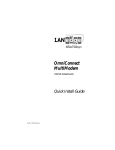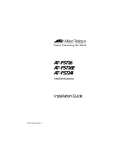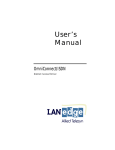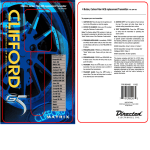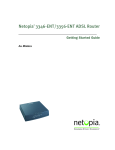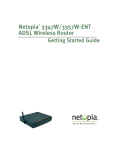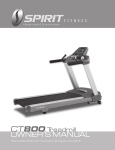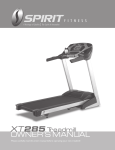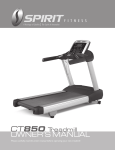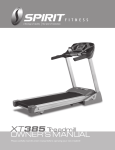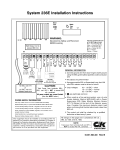Download Allied Telesyn International Corp OmniConnect/ISDN Install guide
Transcript
OmniConnect ISDN Internet Access Device Quick Install Guide PN 613-10791-00 Rev. A Copyright ”1999 Allied Telesyn International, Corp. 960 Stewart Drive Suite B, Sunnyvale CA 94086 USA All rights reserved. No part of this publication may be reproduced without prior written permission from Allied Telesyn International, Corp. Ethernet is a registered trademark of Xerox Corporation. All other product names, company names, logos or other designations mentioned herein are trademarks or registered trademarks of their respective owners. Allied Telesyn International, Corp. reserves the right to make changes in specifications and other information contained in this document without prior written notice. The information provided herein is subject to change without notice. In no event shall Allied Telesyn International, Corp. be liable for any incidental, special, indirect, or consequential damages whatsoever, including but not limited to lost profits, arising out of or related to this manual or the information contained herein, even if Allied Telesyn International, Corp. has been advised of, known, or should have known, the possibility of such damages. Regulatory Compliance Information Agency Approvals The following agency approvals have been obtained for the LanEdge OmniConnect ISDN internet access device in the areas of Safety, EMC and PTT (Public Telephone and Telegraph). Safety UL 1950, CSA 22.2 No. 950, EN 60950, EN 41003 EMC FCC Part 68, FCC Class B, Canada ICES-003 Issue 2 Class B, EN 55022 Class B (CISPR22 B), EN50082-1, VCCI Class 2 PTT FCC Part 68, Canadian CS-03, Germany National ISDN-1TR6, French Delta NET-3, Australian TS-13 CE Marking Directive The CE mark signifies that the product meets the European Directive 73/23/EEC, 89/336/EEC, and 91/263/EEC. EMC Information LanEdge OmniConnect ISDN product conforms to the requirements of Electro-Magnetic Compatibility (EMC) Directive 89/336/EEC. The installation and maintenance procedures in the installation and configuration guide must be followed to ensure compliance with these regulations. EN55022B Statement This equipment has been tested and found to comply with the limits for a Class B equipment pursuant of EN55022. Class B equipment is information technology equipment which satisfies the Class B interference limits. Such equipment should not be subject to restrictions on its sale and is generally not subject to restrictions on its use. iii Regulatory Compliance Information FCC Class B Statement This device complies with Part 15 of the FCC Rules. Operation is subject to the following two conditions: (1) This device may not cause harmful interference, and (2) this device must accept any interference received, including interference that may cause undesired operation. This device has been tested and found to comply with the limits for a Class B digital device, pursuant to Part 15 of the FCC Rules. These limits are designed to provide reasonable protection against harmful interference in a residential installation. This equipment generates, uses and can radiate radio frequency energy and if not installed and used in accordance with the instructions may cause harmful interference to radio communications. However, there is no guarantee that interference will not occur in a particular installation. If this equipment does cause harmful interference to radio or television reception, which can be determined by turning the equipment off and on, the user is encouraged to correct the interference by one or more of the following measures: • • • • Reorient or relocate the receiving antenna. Increase the separation between the equipment and the receiver. Connect the equipment into an outlet on a circuit different from that to which the receiver is connected. Consult the dealer or an experienced radio/TV technician for help. FCC Part 68 Statement The Federal Communications Commission (FCC) has established rules which permit htis device to be directly connected to the telephone network, Standardized jacks are used for these connections. This equipment should not be used onparty lines or coin phones. If this device is malfunctioning, it may also be causing harm to the telephone network; the device should be disconnected until the source of the problem can be determined and until repair has been made. If this is not done, the telephone company may temporarily disconnect service. The telephone company may make changes in its technical operations and procedures; if such changes affect the compatibility or use of this device, the telephone company is required to give adequate notice of the changes. You will be advised of your right to file a complaint with the FCC. iv OmniConnect ISDN Quick Install Guide If the telephone company requests information on what equipment is connected to their lines, inform them of: 1. The telephone number to which this unit is connected. 2. The ringer equivalence number. 3. The USOC jack required [RJ11C] 4. The FCC Registration Number [xxxUSA-xxxxx-xx-e] In the event of equipment malfunction, an authorized agent should perform all repairs. It is the responsibility of users requireing service to report the need for service to an authorized agent or company. Operating Conditions for Canada Canadian Department of Communications Notice The Canadian Department of Communications label identifies certified equipment. This certification means that the equipment meets certain telecommunications network protective operational and safety requirements. The Department does not guarantee the equipment will operate to the user's satisfaction. Before installing the equipment, users should ensure that it is permissible to be connected to the facilities of the local telecommunications company. The equipment must also be installed using an acceptable method of connection. In some cases, the company's inside wiring associated with a single line individual service may be extended by means of a certified connector assembly (telephone extension cord). The customer should be aware that compliance with the above conditions may not prevent degradation of service in some situations. Repairs to certified equipment should be made by an authorized Canadian maintenance facility designated by the supplier. Any repairs or alterations made by the user to this equipment, or equipment malfunctions, may give the telecommunications company cause to request the user to disconnect the equipment. Users should ensure for their own protection that the electrical ground connections of the power utility, telephone lines, and internal metallic water pipe system, if present, are connected together. This precaution may be particularly important in rural areas. Users should not attempt to make such connections themselves, but should contact the appropriate electric inspection authority, or electrician, as appropriate. v Regulatory Compliance Information The Ringer Equivalence Number (REN) assigned to each terminal device provides an indication of the maximum number of terminals allowed to be connected to a telephone interface. The termination on an interface may consist of any combination of devices subject only to the requirement that the sum of the Ringer Equivalence Number of all the devices does not exceed 5. Canadian DOC Compliance Notice This digital apparatus does not exceed the Class B limits for radio noise emissions for digital apparatus as set in the Radio Interference Regulations of the Canadian Department of Communications. Canadiene DOC Avis de Conformation Le present appareil numerique n'emet pas de bruits radioelectriques depassant les limits applicables aux appareils numeriques de class B prescrites dans le Reglement sur le brouillage radioelectrique edicte par le ministere des Communications du Canada. Operating Conditions for the EC The LanEdge OmniConnect ISDN internet access device conforms to the Low Voltage Directive 73/23/EEC, the EMC Directive 89/336/EEC, and the TTE Directive 91/263/EEC. The European Community specifies the requirements for ISDN cabling for use with the OmniConnect access device. In countries outside the EC, these specifications hsould be used to ensure optimal signal quality. ISDN cable specifications are listed in the table below. Requirement TX/RX Capacitance TX/RX Impedance Crosstalk Loss at 96 KHz Connector Resistance Ohmic Resistance Value 350pF > 75 ohms >60 dB 3 ohms < 0.5 % Tolerance 0% to 10% N/A N/A +10 % to -10 % N/A vi OmniConnect ISDN Quick Install Guide Operating Conditions for the United Kingdom The following apply to the LanEdge OmniConnect ISDN internet access device when used in the UK: 1. Interconnection directly, or by way of other apparatus, of ports marked U, S/ T, and Phone with ports marked or not so marked may produce hazardous conditions on the network, and that advice should be obtained from a competent engineer before such a connection is made. 2. The BRI connector must be hardwired permanently to the S-reference connection point by using a connect-one-time-only, non-removable plug (RJ45 with the latch tab removed). 3. This apparatus must be connected to a main socket outlet with a protective earth contact. 4. Connection of power supply: LanEdge OmniConnect ISDN internet access devices are intended for use when supplied with power from a supply providing 220-240 VAC, 50/60 Hz up to 1.25A. vii Table of Contents Regulatory Compliance Information ïïïïïïïïïïïïïïïïïïïïïïïïïïïïïïïïïïïïïïïïïïïïïïïïïïïïïïïïïïïïïïïïïïïïïïïïïïïïïïLLL Agency Approvals.................................................................................................................. iii CE Marking Directive ........................................................................................................... iii EMC Information ................................................................................................................. iii EN55022B Statement.................................................................................................... iii FCC Class B Statement ..................................................................................................iv FCC Part 68 Statement ..................................................................................................iv Operating Conditions for Canada..........................................................................................v Canadian Department of Communications Notice .....................................................v Canadian DOC Compliance Notice .............................................................................vi Canadiene DOC Avis de Conformation.......................................................................vi Operating Conditions for the EC ..........................................................................................vi Operating Conditions for the United Kingdom..................................................................vii Chapter 1 Introduction ïïïïïïïïïïïïïïïïïïïïïïïïïïïïïïïïïïïïïïïïïïïïïïïïïïïïïïïïïïïïïïïïïïïïïïïïïïïïïïïïïïïïïïïïïïïïïïïïïïïïïïïïïïïïïïïïïïïïï ì Overview ..................................................................................................................................1 Work sheet...............................................................................................................................2 Topology..................................................................................................................................3 Chapter 2 Installation ïïïïïïïïïïïïïïïïïïïïïïïïïïïïïïïïïïïïïïïïïïïïïïïïïïïïïïïïïïïïïïïïïïïïïïïïïïïïïïïïïïïïïïïïïïïïïïïïïïïïïïïïïïïïïïïïïïïïïïïï è Verifying OmniConnect ISDN Package Contents ................................................................5 Placing the OmniConnect ......................................................................................................5 To wall mount a LanEdge product ................................................................................6 To place a single LanEdge product on a desktop ..........................................................6 To interlock a group of LanEdge products on a desktop .............................................7 Connecting the OmniConnect ...............................................................................................8 Verify your PC Configuration ..............................................................................................10 Load OmniStart on the Host PC ..........................................................................................10 Configuration Screens...........................................................................................................10 Enter Password..............................................................................................................11 Internet Service Provider Setup ...................................................................................12 ISDN Parameters Setup................................................................................................13 DNS Configuration.......................................................................................................14 ISDN Parameter Verification.......................................................................................15 Advanced Setup Options (Finish)................................................................................17 LanEdge Publications............................................................................................................18 Where To Find Allied Telesyn and Technical Publications .......................................18 ix 7DEOHýRIý&RQWHQWV Appendix A LanEdge OmniConnect ISDN Installation Guide Feedback ïïïïïïïïïïïïïïïïïïïïïïïïïïïïïïïïïïïïïïïïïïëì Appendix B Technical Support Fax Order ïïïïïïïïïïïïïïïïïïïïïïïïïïïïïïïïïïïïïïïïïïïïïïïïïïïïïïïïïïïïïïïïïïïïïïïïïïïïïïïïïïïïïïïïïëê x Chapter 1 Introduction Overview The OmniConnect ISDN Internet Access Device connects users on a local Ethernet LAN to the Internet over Integrated Services Digital Network (ISDN) Basic Rate Interface (BRI) lines. The illustrations below show the front and rear panels of the OmniConnect ISDN. REAR OF ISDN (S/T) REAR OF ISDN (U) FRONT ý Power Col 10Base-T LEDs Ports 1, 2, 3, 4 ISDN Activity LEDs B1, B2, D Channels 1 Introduction Work sheet Before you begin installation, use the following OmniConnect work sheet and note the listed information for use during configuration. OmniConnect ISDN Work Sheet ‰ ISDN line is installed and accessible. ‰ Obtain information about your account from your ISDN Provide: — ISDN Switch Type ______________________________________ — DN #1 (Directory Number) ______________________________ — SPID #1 (if used, North America only) _____________________ — DN #2 (Directory Number, if used) ________________________ — SPID #1 (if used, North America only) ______________________ ‰ Obtain information about your account from your Internet Service Provider (ISP): — Login name ___________________________________________ — Password _____________________________________________ — Phone number(s) ______________________________________ — Domain Name ________________________________________ — Domain Name Server IP Address (default 192.168.1.1 )____________________________________ ‰ Plan your network topology by identifying the OmniConnect unit connections. ‰ Verify that you have the hardware and cables necessary to complete the installation. User supplied items include: — 10Base-T Cables to connect each client workstation (1 provided) — ISDN Cable (RJ-45) and External NT-1 for S/T model — Telephone or telephone equipment for use with POTS connector. 2 OmniConnect ISDN Quick Install Guide Topology Plan your topology including the OmniConnect. The sample topology below shows the ISDN OmniConnect used for a group of PC users in a small office network. In this example, four 10 Mbps PC NICs and a telephone are connected to the OmniConnect. Legend ISDN Cable (RJ-45) 10Base-T Cable Telephone Cable (RJ-11) ISDN Line (NT-1 for S/T) OmniConnect* ISDN (U) or (S/T) 1 2 3 4 Phone or FAX 10 Mbps Workstations *Note: Port 1 is either a Workstation or LAN 3 Chapter 2 Installation Use this section to verify your package contents, position the device, and configure it. Verifying OmniConnect ISDN Package Contents — One OmniConnect ISDN Internet Access Device — Accessory bag containing rubber feet and bumpers for desktop placement, and screws for wall mounting the unit — This Quick Install Guide — One 10Base-T Ethernet Cable — One analog telephone cable — One two-piece AC power adapter — A CD-ROM labeled OmniStart — A Warranty Card Placing the OmniConnect You can wall mount a single LanEdge product, place it on a desktop, or interlock two or more to form a single unit that occupies only one footprint on the desktop. Air vents are located on both sides of the LanEdge product casing. Caution Air vents must not be blocked and must have free access to the room ambient air for cooling. 5 Installation To place your LanEdge product, see the steps that follow: ‰ “To wall mount a LanEdge product” on page 6 ‰ “To place a single LanEdge product on a desktop” on page 6 ‰ “To interlock a group of LanEdge products on a desktop” on page 7 To wall mount a LanEdge product 1. Do not install the rubber feet or bumpers if you are wall mounting the product. If you previously installed the square rubber bumpers, remove them using the following step. (The round rubber feet need not be removed.) ‰ To remove the square rubber bumper from the unit: Place the unit upside down. For each bumper, insert the tip of a small straight-slot screwdriver between the rubber bumper and the unit casing. Press down on the screwdriver to pry the bumper off. 2. Prepare the wall by installing two screws (provided) at 9 1/4-inch (23.5 cm) apart on center. 3. Position the unit onto the screws. Skip to “Connecting the OmniConnect” on page 8. To place a single LanEdge product on a desktop 1. Place the unit upside down. 2. Locate the round rubber feet and square rubber bumpers from the accessory bag. Remove the paper cover from the adhesive and press a rubber foot into each round receptacle on the bottom of the unit. Remove the paper cover from the adhesive and press a rubber bumper into each square receptacle on the bottom of the unit. 3. Put the unit on the desktop. Skip to “Connecting the OmniConnect” on page 8. 6 OmniConnect ISDN Quick Install Guide To interlock a group of LanEdge products on a desktop You can interlock two or more LanEdge products. Interlocking is a physical placement so that the products occupy only one footprint on the desktop. Interlocking does not connect the devices in any other way. If you are installing a FastPrint Server, place it as the base (bottom) unit, otherwise, place the OmniConnect as the base unit. 1. Select the base unit and place it upside down on a work surface. Locate the rubber feet and bumpers from the accessory bag. Remove the paper cover from the adhesive and press a rubber foot into each round receptacle on the bottom of the unit. Remove the paper cover from the adhesive and press a rubber bumper into each square receptacle on the bottom of the unit. 2. Place each of the other units upside down on a work surface. Locate the rubber feet and bumpers from the accessory bag. Do not install the square rubber bumpers. Remove the paper cover from the adhesive and press a round rubber foot into each round receptacle on the bottom of the unit. 1RWH The LanEdge products will not interlock properly if the square rubber bumpers are installed on the interlocking (upper) unit; install these bumpers only on the base unit. 7 Installation 3. Place the first LanEdge unit on the desktop as the base. If you are installing a FastPrint Server, place it as the base (bottom) unit, otherwise, place the OmniConnect as the base unit. 4. Pry off the interlock cap at each corner of the unit: From the side of the unit, insert the tip of a small straight-slot screwdriver into the opening of the interlock cap. Press down on the screwdriver to pry the cap off. 5. Place the next unit over the base (stack) and press down on each corner to snap the units together. 6. Repeat steps 4 and 5 until all units are in the assemblage. 7. Continue with the installation instructions for each product, and then return to “Connecting the OmniConnect” on page 8. Connecting the OmniConnect 1. Connect the ISDN cable to the OmniConnect at the rear panel connector. For the other end, — On ISDN (U): connect the cable directly to the ISDN line. — On the ISDN (S/T): connect the cable to an external NT-1 on the ISDN line. 2. Connect a telephone (optional) to the POTS connector at the rear panel using a RJ-11 telephone cable (one provided). 3. Connect the Ethernet LAN devices to the OmniConnect at the rear panel connectors. Use a straight through RJ-45 cable (one provided) to connect to the PC through a 10 Mbps or 10/100 Mbps Ethernet Network Interface Card (NIC). To connect a LAN to the OmniConnect, use a straight through cable to Port 1 and move the MDI switch to the ON position (use a non-conductive [plastic] object to move the switch through the case access on the bottom of the OmniConnect). This eliminates the need for a crossover cable. 1RWH For your convenience, a flexible cable tie at the right rear of the LanEdge chassis can be used to secure the Ethernet cables. 4. Apply power to the OmniConnect as follows: 8 OmniConnect ISDN Quick Install Guide Plug the AC power adapter provided with the unit into the correct AC power source for this adapter. Next connect the DC cable from the adapter into the OmniConnect DC input. Verify that the Power LED lights (see LED table). 5. Verify that the Ethernet LEDs light green (see LED table). For troubleshooting techniques, refer to your Installation Guide. You are now ready to configure and setup the OmniConnect. To continue, see “Verify your PC Configuration” on page 10. LED Color State Description Power Green On The unit is receiving power, voltage is within the acceptable range, and the power supply is working. Off No power. Flashing The unit is experiencing collisions on the LAN segment. It is normal for this indicator to flash on occasion Off Normal operation. On The port is connected to a active 10Base-T repeater or adapter and the link is active. Flashing The port is receiving data packets. Off Port is not connected to an active 10Base-T repeater or adapter. On The channel is connected to an active ISDN switch. Flashing The channel is receiving and transmitting. Off The channel is not active. Col Ethernet Amber Green ISDN Activ- Green or ity: Amber B1, B2, D 9 Installation Verify your PC Configuration 1. Verify that your NIC and network driver are correctly installed; the Ethernet LED on the OmniConnect and the Link LED on the NIC should be lit. If necessary, refer to the installation manual for the NIC and the PC. 2. Verify that the TCP/IP protocol is installed and configured on each PC connected to the OmniConnect. For details concerning this, refer to the “TCP/IP Network Installation and Configuration” section of your Installation Guide. See “LanEdge Publications” on page 18 for a list of documents. Load OmniStart on the Host PC Use these steps to install OmniStart on the host PC. 1. Insert the CD-ROM and, if necessary, execute the setup.exe file using Run within the Windows£95/NT Start button or by using Windows£Explorer. 2. Follow the instructions on the screen to install the applications on the PC and run the configuration applications. The process starts by displaying the OmniStart Welcome screen, then automatically copies files to the PC, and begins the configuration. (You will need the work sheet information your prepared in Chapter 1 during the configuration.) For descriptions of some of the required configuration screens, refer to “Configuration Screens,” The simple installation described here is for a configuration that does not have an established network and uses the OmniConnect as a DHCP server to dynamically allocate IP address for each client PC. For specific configuration information when using the OmniConnect with an established network, or to define filters, DHCP parameters, or other Advanced Setup Options, refer to your Installation Guide. See “LanEdge Publications” on page 18 for a list of documents. Configuration Screens The OmniStart configuration and setup utility has several screens. In most cases the onscreen setup instructions allow you to quickly and simply install and configure the OmniConnect. This section presents some of the mandatory screens where the user must enter information for a simple installation. 10 OmniConnect ISDN Quick Install Guide Enter Password Access to the OmniStart configuration utility is protected by a password. The default password is omni. Enter omni in the dialog box titled Password and press Enter or Next> to advance to the next screen. To change the password from the default value, click the check box 'Select this box to change the password' and then enter the new password in the New Password and Confirm New Password dialog boxes and press Next>. This will change the password to the new value. The maximum length of the password string is 15 characters and it may be any alphanumeric character. Pressing Cancel will terminate the OmniStart installation. 11 Installation Internet Service Provider Setup The Internet Service Provider Setup screen is used to enter the Internet Service Provider (ISP) login and password information. The Internet Service Provider (ISP) provides you with a login name, password and phone number. Enter the login information provided in this screen. The OmniConnect will use this information to establish a connection with the Internet Service Provider. Remember to enter any numbers required to access an outside area code or city code. 12 OmniConnect ISDN Quick Install Guide ISDN Parameters Setup The ISDN Parameters Screen is used to enter ISDN configuration information. When an ISDN line is ordered, the ISDN dial-tone provider assigns an ISDN switch for the ISDN connection, the switch software configuration and the ISDN phone numbers (Directory Number) and SPID Numbers. Use this screen to enter all these parameters. Please note that in certain cases, fewer than two SPIDs or ISDN Phone Numbers may be provided. First, use the ISDN Switch Type pull-down menu to select the ISDN Switch Type. If the switch type assigned by the service provider is not listed, please select the Others option. Next, select the Switch Software Type. The setup program highlights only valid Switch Software Types based on the ISDN Switch Type. Enter the ISDN phone numbers and ISDN SPID numbers (if applicable) into the edit boxes. 13 Installation The Enable Data Over Voice (DOV) dialog box should be checked if the ISDN line is provisioned for Data Over Voice. If the Disable Data Over Voice (Data Only) dialog box is checked, the OmniConnect will request Data Only bearer services. The default is Disable Enable Data Over Voice. Once this information has been entered, pressing the Next > button will advance the setup process to the next screen. Pressing the Advanced >>> button will allow the setting of advanced ISDN parameters. If the ISDN link has not been configured or all the information on this screen is not available, the setup process may be canceled by pressing the Cancel button. At any time, it is possible to return to the previous setup screen by pressing the <Back button. DNS Configuration Use this screen to enter the domain name and IP address of the DNS Server used by the ISP. This information is provided by the ISP. This information is required only if the DHCP server is being utilized. The DHCP server will provide the DNS information collected from this screen to all the DHCP clients. The DHCP Server may be disabled by selecting the Disable DHCP Server option. When the Disable DHCP Server is selected, the DNS Configuration information is not required and may be left blank. 14 OmniConnect ISDN Quick Install Guide The default DHCP address is 192.168.1.1. Once this information is entered, press the Next > button to proceed to the next screen. ISDN Parameter Verification The ISDN Parameter Verification screen verifies the configuration of the ISDN line, ISDN switch settings, the ISP information and the DNS information. Each of these parameters are checked for the ISDN line. If there is a failure, an 'x' is displayed next to the failing item, and if the configuration is correct, a check mark is displayed. 15 Installation ISDN Configuration checks to see if the ISDN line is correctly connected to a live ISDN line and if the ISDN switch parameter settings (switch type, Directory Number and SPID) are correct. If any of these are not true, ISDN Configuration returns a failure. ISP Configuration checks to see if the ISP information (login, password and phone number) are correct and a login is possible. If any of these are not correct, this test returns a failure. Lastly, DNS Configuration checks the DNS server address that is entered in the DNS screen. If this is incorrect, this test returns a failure. If there were any failures, press the Next button to go to the Advanced Setup Options screen, then press the Back button to reenter the configuration and make corrections. When the test returns satisfactory results, this concludes the setup process for a simple installation. Press the Next button to go to the next screen. 16 OmniConnect ISDN Quick Install Guide Advanced Setup Options (Finish) Once the user has reached this Advanced Setup Options screen, all the minimum parameters for a simple installation of the OmniConnect have been configured. Press the FINISH button on this screen to exit the setup program. The OmniConnect is ready for use! The various options located on this screen may be used to setup various advanced options. For specific configuration information when using the OmniConnect with an established network, or to define filters, DHCP parameters, or other Advanced Setup Options, refer to your Installation Guide. Refer to “LanEdge Publications” on page 18 for a list of documents. When needed, to restart the OmniStart setup select the 2PQL6WDUW# &RQILJXUDWLRQ option icon installed in the 2PQL6WDUW#,6'1 folder. 17 Installation LanEdge Publications Visit our technical publications website at: www.alliedtelesyn.com Web and CD-ROM Related Guides Print 9 OmniConnect ISDN Installation Guide, 613-10787-00 9 OmniConnect ISDN Quick Install Guide, 613-10791-00 (shipped with product) Where To Find Allied Telesyn and Technical Publications For Technical Support or Service Location Phone Fax Americas United States, Canada, Mexico, Central America, South America 1 (800) 428-4835 1 (918) 628-3222 Asia Singapore, Taiwan, Thailand, Malaysia, Indonesia, Korea, Philippines, China, India (+65) 3815-613 (+65) 3833-830 Australia Australia, New Zealand (61) 2-943-5111 (61) 2-9438-4966 France France, Belgium, Luxembourg, The Netherlands, Middle East, Africa (+33) 1-60-92-15-32 (+33) 1-69-28-37-49 Germany Germany, Switzerland, Austria, Eastern Europe (+49) 30-435-900-126 (+49) 30-435-70-650 Hong Kong (+852) 2-529-4111 (+852) 2 529-7661 Italy Italy, Spain, Portugal, Greece, Turkey, Israel (+39) 02-416047 (+39) 02-419282 Japan (+81) 3-3443-5640 (+81) 3-3443-2443 United Kingdom United Kingdom, Denmark, Norway, Sweden, Finland, Iceland (+44) 1-235-442560 (+44) 1-235-442680 Technical Bulletin Board Service 1 (425) 483-7979 18 OmniConnect ISDN Quick Install Guide For Technical Support or Service Location Phone Fax Technical Support Address [email protected] CompuServe Go ALLIED FTP Server $GGUHVVã JDWHZD\ïFHQWUHïFRPý>ORZHUFDVHýOHWWHUV@ /RJLQã DQRQ\PRXVý>ORZHUFDVHýOHWWHUV@ 3DVVZRUGã \RXUýHðPDLOýDGGUHVVý>UHTXHVWHGýE\ýWKHýVHUYHUýDWý ORJLQ@ For Information Regarding Allied Telesyn International, Corp. Allied Telesyn International, Corp. 19015 North Creek Parkway Bothell, WA 98011 Tel: 1 (425) 487-8880 Fax: 1 (425) 489-9191 Allied Telesyn International, Corp. 960 Stewart Drive, Suite B Sunnyvale, CA 94086 Tel: 1 (800) 424-4284 (USA and Canada) Fax: 1 (408) 736-0100 World Wide Web http://www.alliedtelesyn.com 19 Appendix A LanEdge OmniConnect ISDN Installation Guide Feedback Please tell us what additional information you would like to see discussed in this guide. If there are topics you would like information on that were not covered in this guide, please photocopy this page, answer the questions and fax or mail this form back to Allied Telesyn. The mailing address and fax number are at the bottom of the page. Your comments are valuable when we plan future revisions of this guide. I found the following the most valuable _______________________________ _______________________________________________________________ _______________________________________________________________ _______________________________________________________________ I would like the following more developed _____________________________ _______________________________________________________________ _______________________________________________________________ _______________________________________________________________ I would find this guide more useful if _________________________________ _______________________________________________________________ _______________________________________________________________ _______________________________________________________________ Please fax or mail your feedback. Fax to 1-408-736-0100. Or mail to: Allied Telesyn International, Corp. c/o Technical Communications Depart. 960 Stewart Drive, Suite B Sunnyvale, CA 94086 USA PN 613-10791-00 Rev A 21 Appendix B Technical Support Fax Order Name __________________________________________________________________ Company _______________________________________________________________ Address ________________________________________________________________ City ________________________ State/Province_______________________________ Zip/Postal Code ___________________ Country_______________________________ Phone _______________________________Fax________________________________ Incident Summary Model number of Allied Telesyn product I am using _____________________________ Firmware release number of Allied Telesyn product_____________________________ Other network software products I am using (e.g., network managers) ______________________________________________________________________ ______________________________________________________________________ Brief summary of problem _________________________________________________ ______________________________________________________________________ Conditions (List the steps that led up to the problem.) ___________________________ ______________________________________________________________________ ______________________________________________________________________ ______________________________________________________________________ ______________________________________________________________________ ______________________________________________________________________ ______________________________________________________________________ ______________________________________________________________________ Detailed description (Please use separate sheet) Please also fax printouts of relevant files such as batch files and configuration files. When completed, fax this sheet to the appropriate Allied Telesyn office. Fax numbers can be found on page 18. 23


































